You’ve probably seen the AI action figure meme by now. Upload a photo, add a few job details, and like magic you’re transformed into a boxed-up, ready-for-sale version of yourself.
It even became a Forbes science and innovation article: ChatGPT AI Action Figure Trend, Explained — And How To Make Your Own
It’s fun. It’s fast. And suddenly, it’s everywhere. As an innovator these moments are clear milestones; moments when a technology goes from something new to something joe-public is playing with. For me, that’s the final phase of an ‘innovation’. It’s when a technology moves from the hands of the early adopters and into the public.

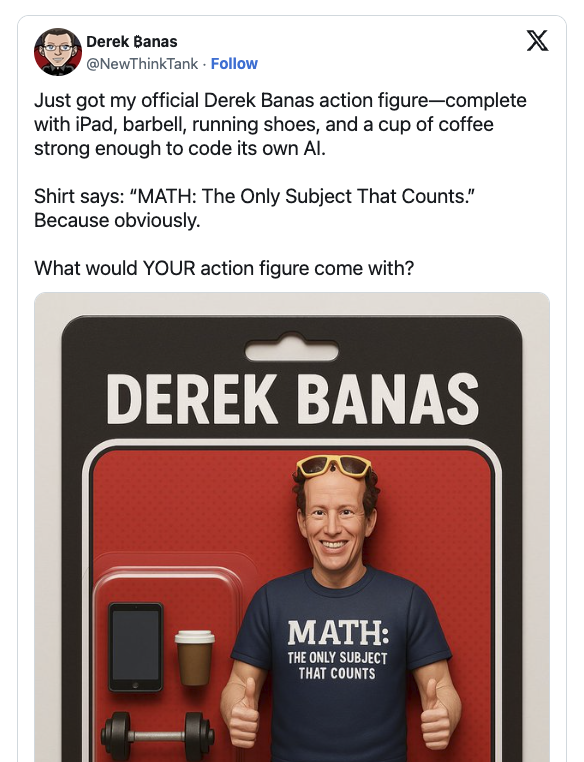
It seemed like a good moment to run another AI experiment. At DS.Emotion, we’ve been playing with AI for a while. This time, we decided to run something bigger by a) involving the whole team and b) sharing our results and c) asking for your opinions. This involved the whole team, helped us learn, and gave us space to talk about the tougher stuff like ethics, copyright, and what counts as creativity.
Q: Why did we do this now?
“I distinctly remember the moment over a year ago when some of us older team members sat around a small table in a ‘proper’ pub and agreed that AI was here and the best thing we could do was learn about it.” – Lawrence Alexander
We’ve been doing that ever since; running little experiments and trials to spark discussion and test the limits. Generative AI is a storm that’s changing the landscape. We can either adjust our sails or be lost at sea.
This particular experiment started in a brainstorm about something completely different. Dan (our creative Director) and I (our Innovation and Strategy Director) were discussing ideas for a new innovation district in the North of England. We inevitably talked about AI and the recent ChatGPT /SORA trend came up.
It’s a trend that’s been hard to miss. People give ChatGPT a photo of themselves as well as some little details and then ask it to create an action figure. CHatGPT gives you a ‘photo’ of a perfectly boxed star-wars style action figure that looks ‘just like you’ and includes accessories that suit your job.
“I think this meme was a turning point.”
Generative AI went from hot topic, to completely unavoidable overnight. Whilst most of our creative peers have been experimenting with AI for a while it hadn’t reached the hands of ‘the everyman’. I think this meme was a turning point. Any doubts or ethical concerns that people had about AI were quickly forgotten when they saw how easy it was to create something realistic, personal and fun.
And this is how new technology works. It does something for us that we want to do. It photoshops, it spellchecks, it backs up to the cloud or it tells us what our friends are doing, even if they’re on the other side of the world. We, humans, get quickly caught up in the possibilities and the downsides are quickly forgotten.
We’ve been experiencing this technology for quite some time but now seemed like the time to do something bigger than we’d done before. A shift in the conversation.
Q: What exactly did we do?
“It’s cool but everyone’s doing the same thing, even big creative agencies. You’d think they’d come up with something more interesting.” – Dan, Creative Director
I agreed with Dan. This was a fun meme but I thought we could do something more interesting and a little more DS.Emotion. We wanted it to be personal to the team, we wanted everyone to get involved, we wanted it to be about place (because it’s at the heart of everything we do), and we wanted to learn more about SORA.
So, we kept it simple and did just that:
- Everyone submitted a photo of themselves
- They chose a place they love
- Picked a creative style (anything from embroidery to cubism)
- We asked AI to combine these and do the rest
We hoped that this would be a fun way to get everyone talking about generative AI but also a clever way to see what it would do.
Q: What did we learn creatively?
“Go on then, put it on the big screen” – Clare, Client Services Director
Like I say, we’ve been talking about AI for quite some time in various formats. But there was something about this, perhaps the personalisation or the story-telling that really engaged the team. Everyone wanted to see what the AI would give them and they were equally keen to see what choices people had made.
We never could have produced something this visually engaging in this amount of time before. Twenty-seven unique portraits in different styles could quite easily be years of work. Before this SORA update we never would have done this. So I’m happy that it gave us a chance to learn about each other.
It sparked much deeper conversations. People talked about the places they had chosen or why they liked certain styles. The styles themselves were an interesting point. In order to keep it interesting, people immediately went off to find about different styles. Something else we almost definitely wouldn’t have done.
It was great that everyone could get involved. We had everyone from Senior Designers to Accountants getting involved in discussions about landmarks and design decisions.
“It’s not a new lesson, but a timely reminder that a good brief delivers better results”
The other thing that was interesting was how it demanded a clear brief. When we were ambiguous about a style such as ‘Abstract’ we saw various results. It led us to be much more specific about what was abstracted was to shape, geometry, colour or a mixture of all three.
Q: What did we learn ethically?
“People picking living artists doesn’t sit right.” – Jorgia, Senior Social Media Manager
Even though this was a bit of fun it was a good opportunity for us to discuss the trickier aspects of AI. It quickly became clear there were some edges of boundaries that ‘gave us the ick’. Asking it to copy a specific artist or product seems a step too far. In this instance it’s a unique or distinct style that you are taking without their permission.
With this in mind, we’ve included some of the examples so you can see how it works but we all felt more comfortable using it to generate a category or style but not specific people’s work.
It’s critical that we’re open about AI. We’ve used it in some campaigns to create complete fantasy imagery. We’re keen to make sure that when anyone uses AI it’s clear that the photo (or skills behind a painting) don’t exist.
But we’re definitely still learning. We’d love to hear what our clients think, so if you have any thoughts you want to share there’s a comments box at the bottom of the blog.
Q: Is AI a threat or just the next tool?
“We’ve seen the creative industry rattled by tech more than once. Photoshop, spellcheckers, digital cameras, stock libraries, the cloud. Each time, the answer has been the same. Adapt.” – Angus Armitage
There‘s no doubt that, as changes go, generative AI is a big one. When a new technology or any innovation reaches the public it definitely has an impact on society and that’s not always easy to see.
Just look at mobile phones. It’s hard to imagine that just 20 years ago it was normal for all of us to have several hours in the day when we were a) uncontactable and b) couldn’t access any information apart from our memories. Mobile technology is now so ever-present it’s part of train times, train tickets, buying coffee, loyalty cards, office keys, work calendars, birthday messages, dinner reservations, tv shows and alarm clocks.
When a technology is so complex and wide-reaching it’s foolish to claim that it’s completely ‘good’ or ‘bad’. Cars, for example, still kill around five people a day in the UK. But, that same technology is used by almost every person in the UK around once a day. There is no doubt this technology is dangerous, but it also has a positive impact on about 68 million people per day. It’s impossible to draw a straight-line. It’s up to all of us to use any technology sensibly and carefully and that’s just what we’re doing.
Q: What now?
You might have already seen the output of the experiment on our Instagram or LinkedIn but if you haven’t here are all the combinations we produced.
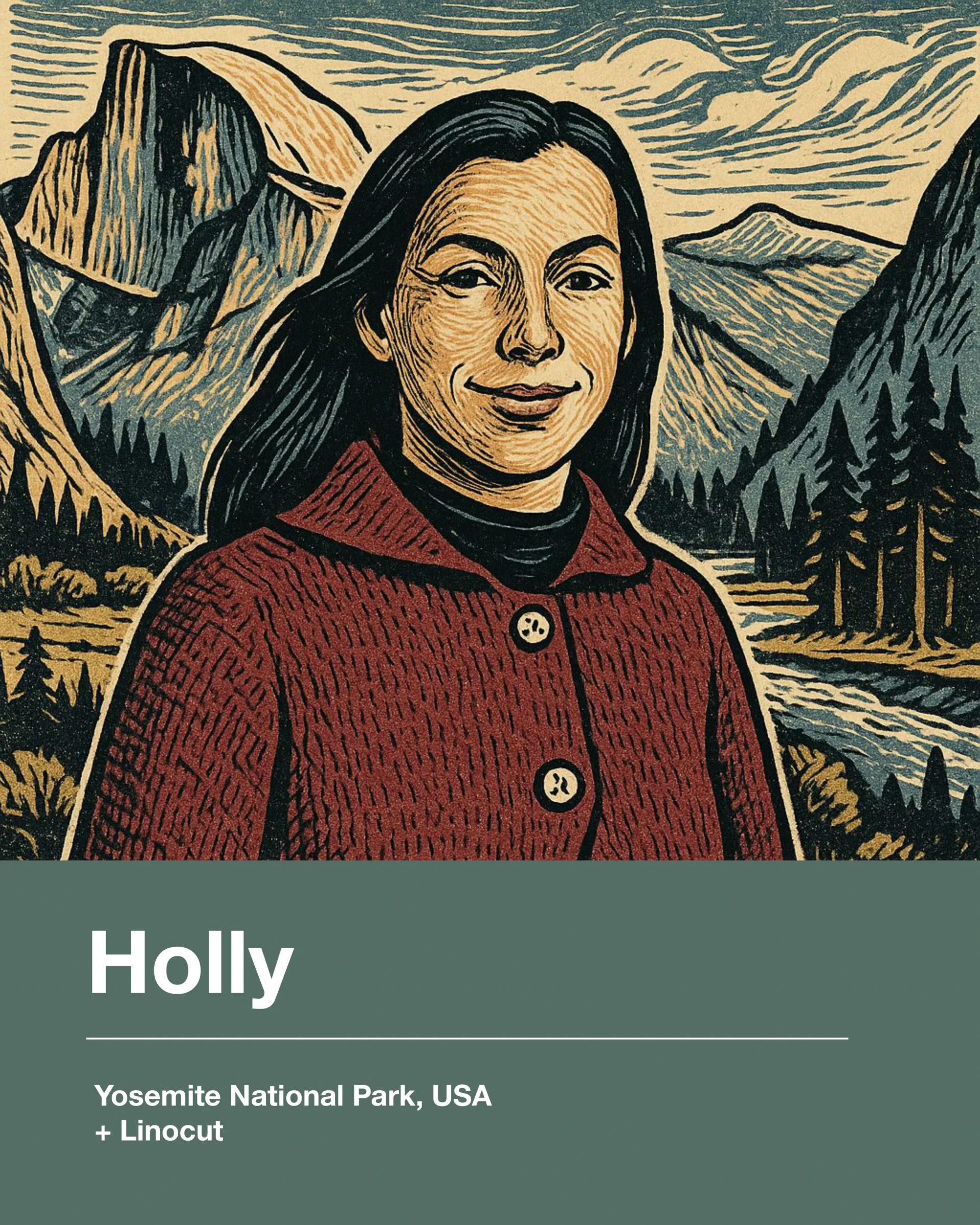

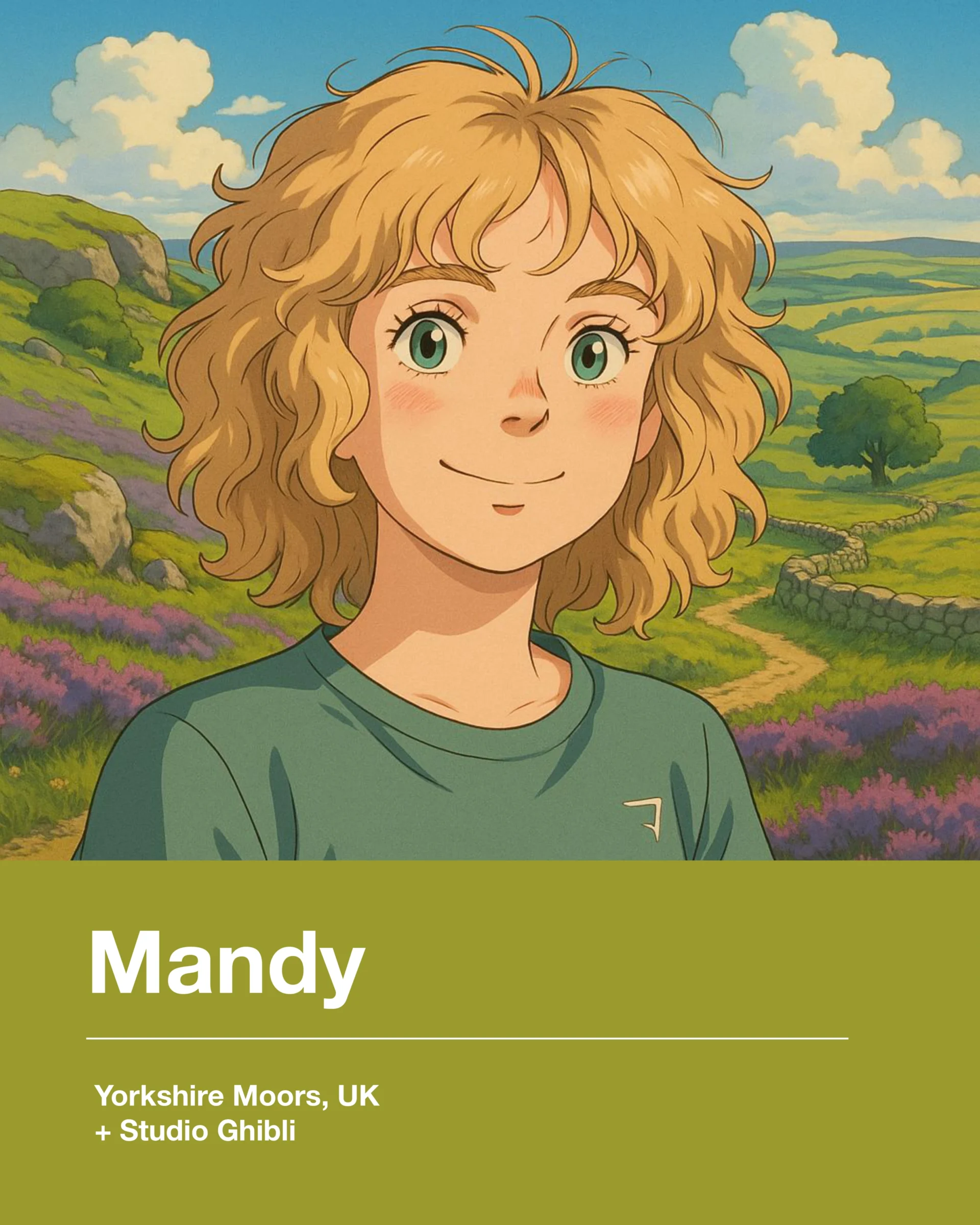

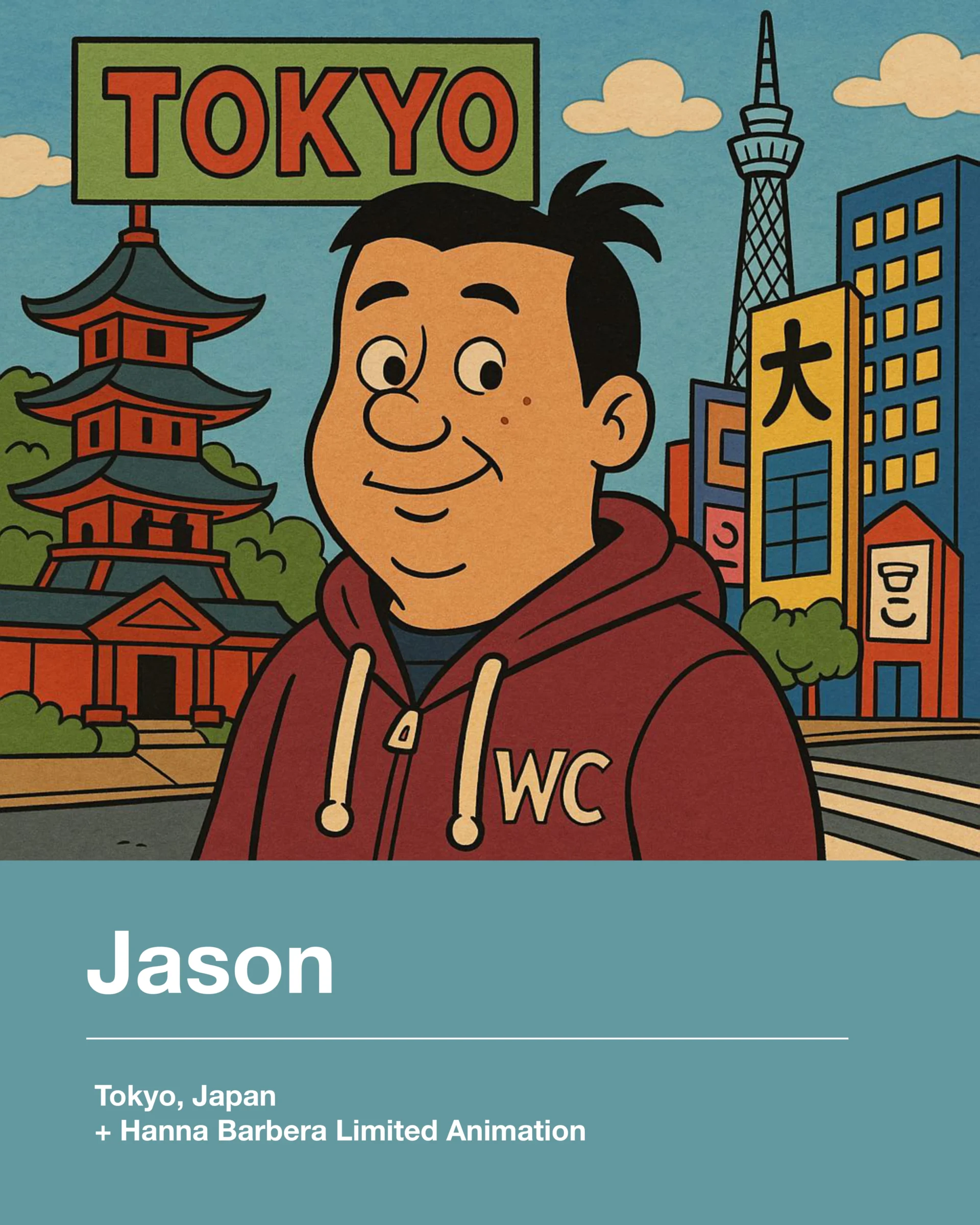
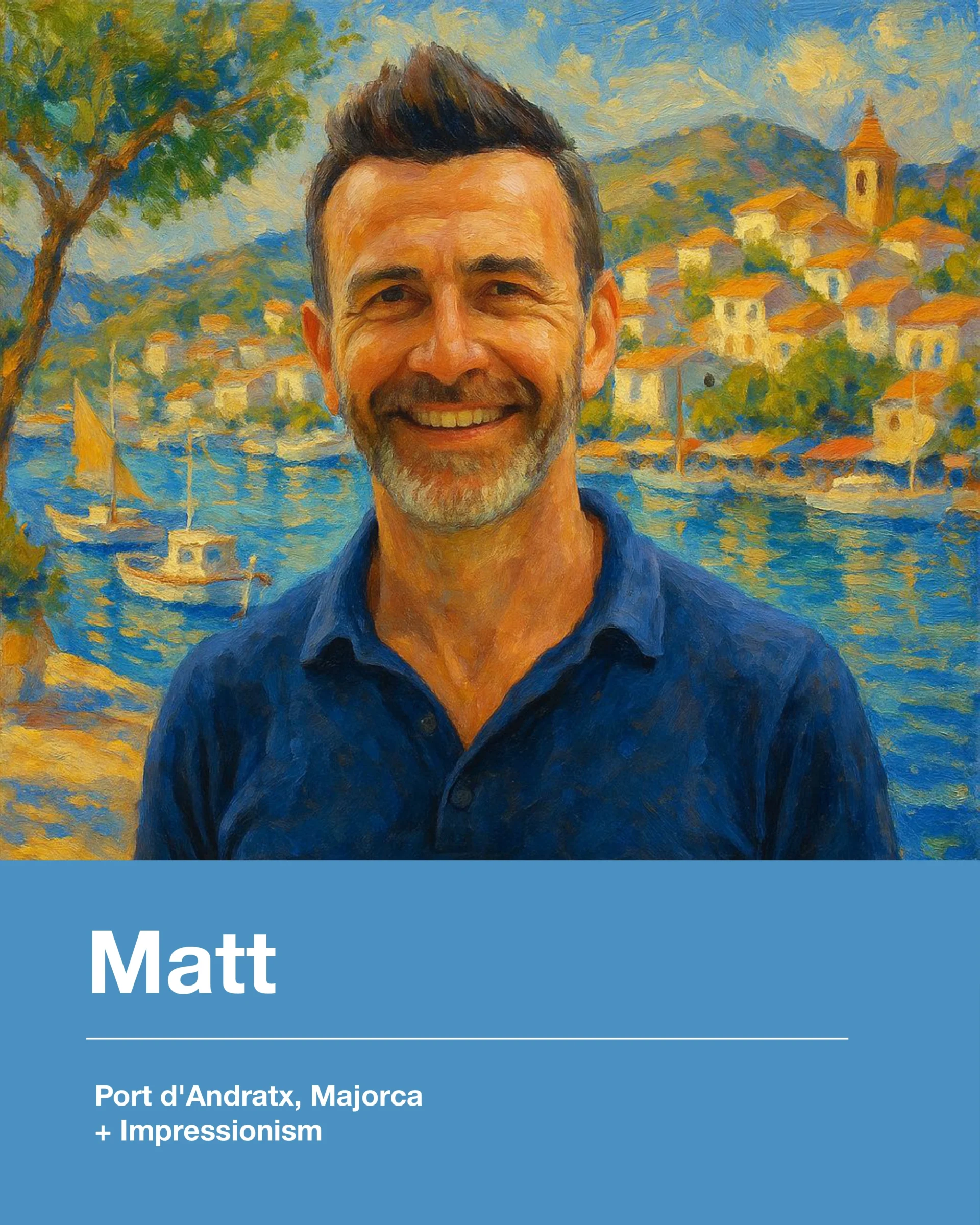
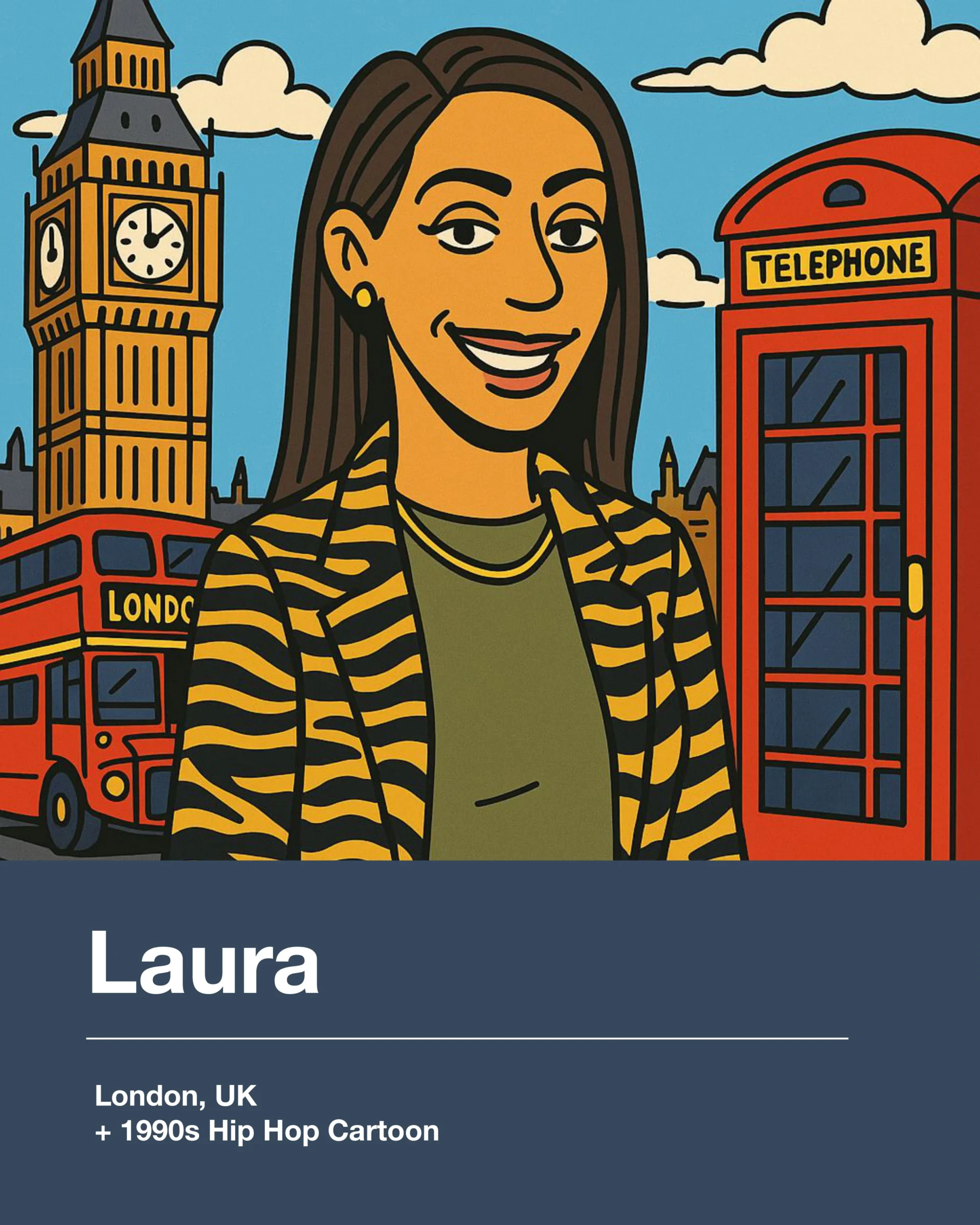
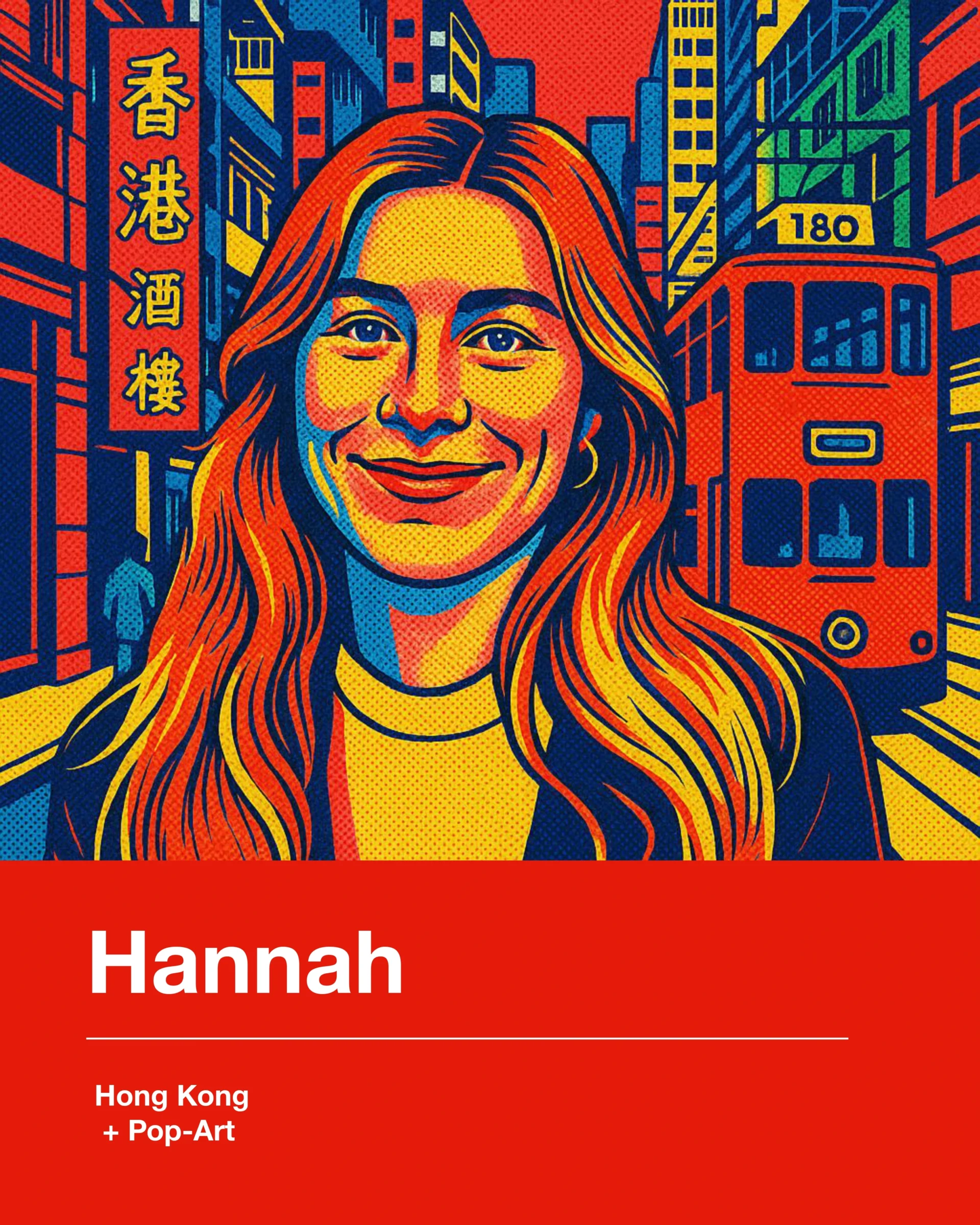
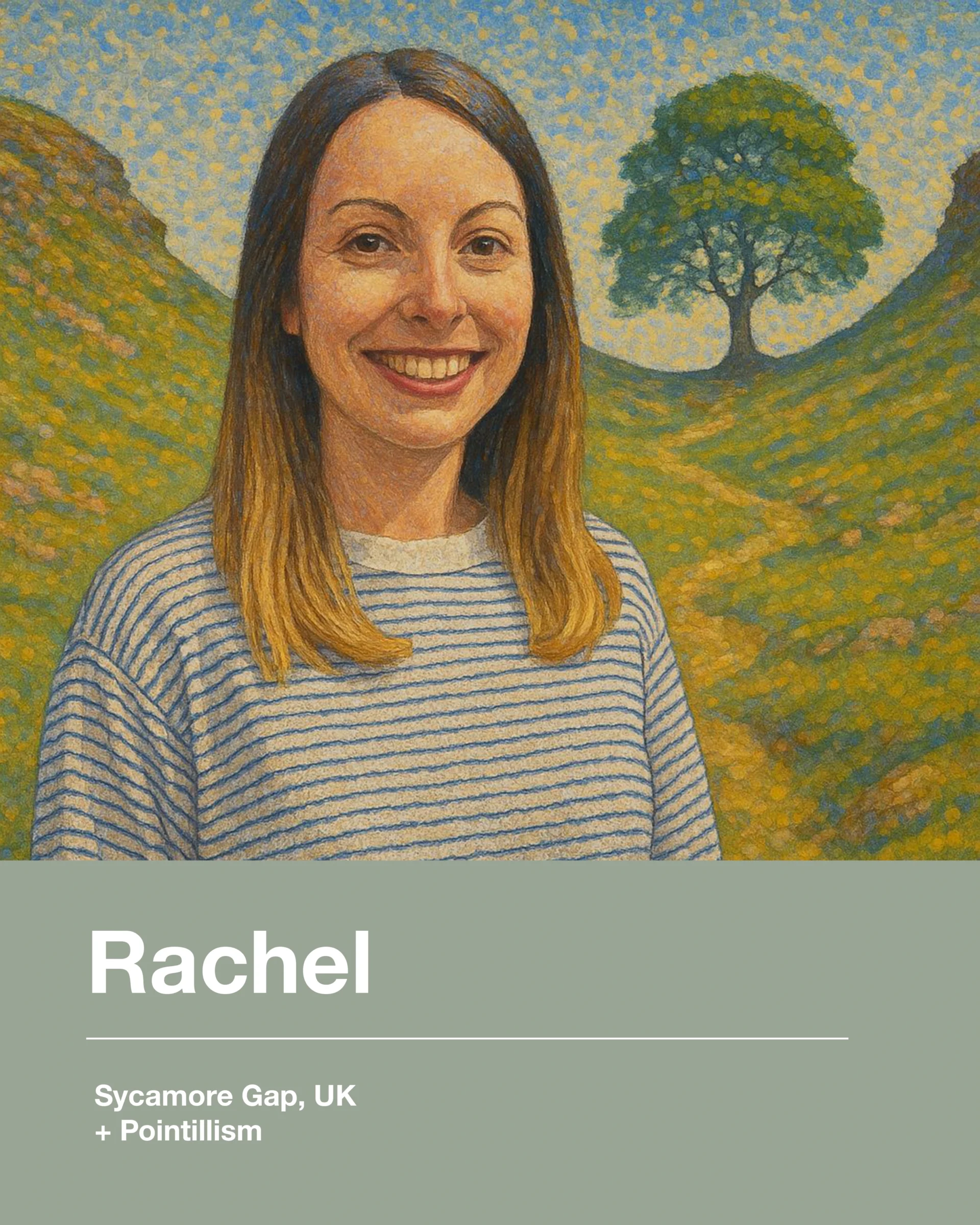
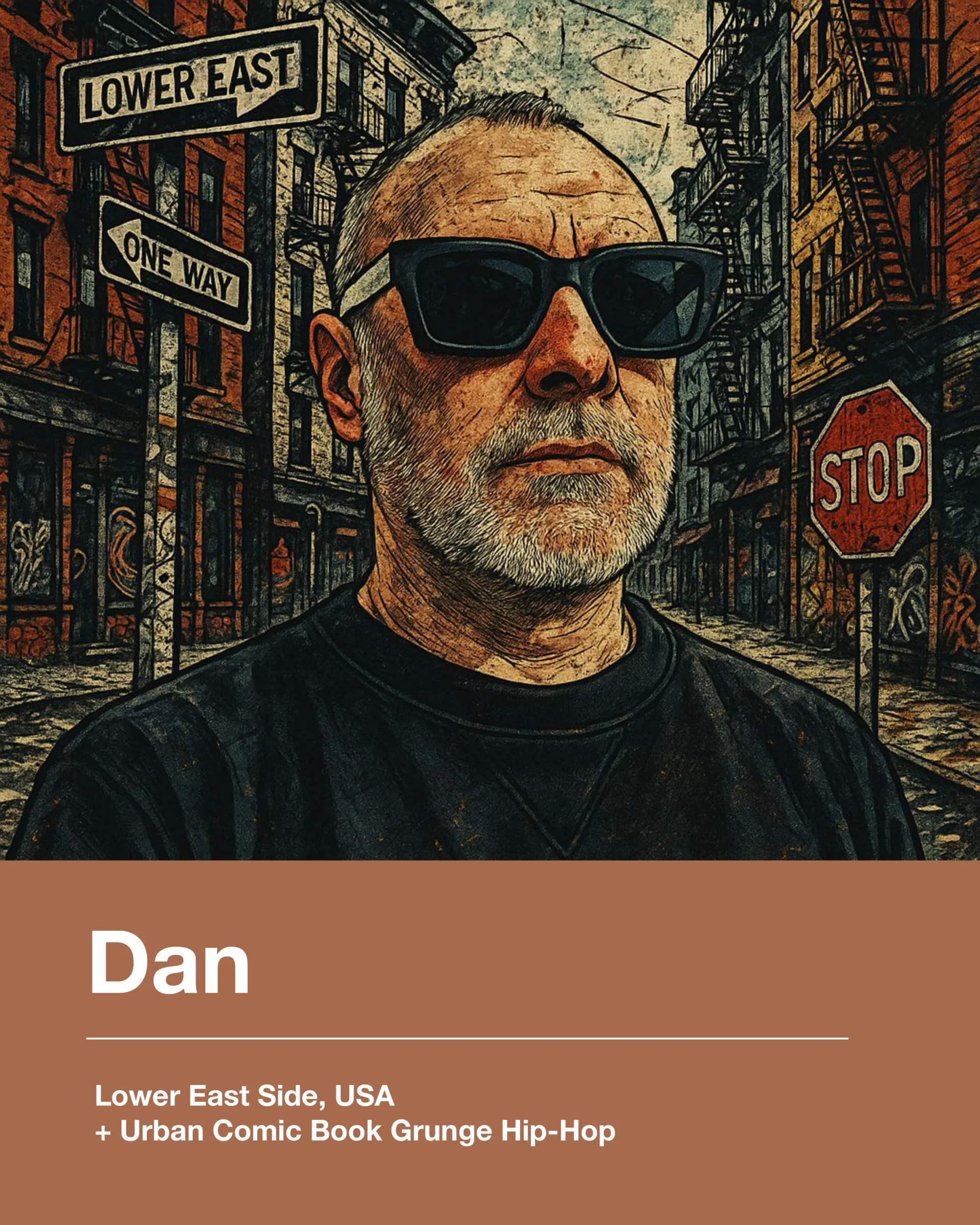
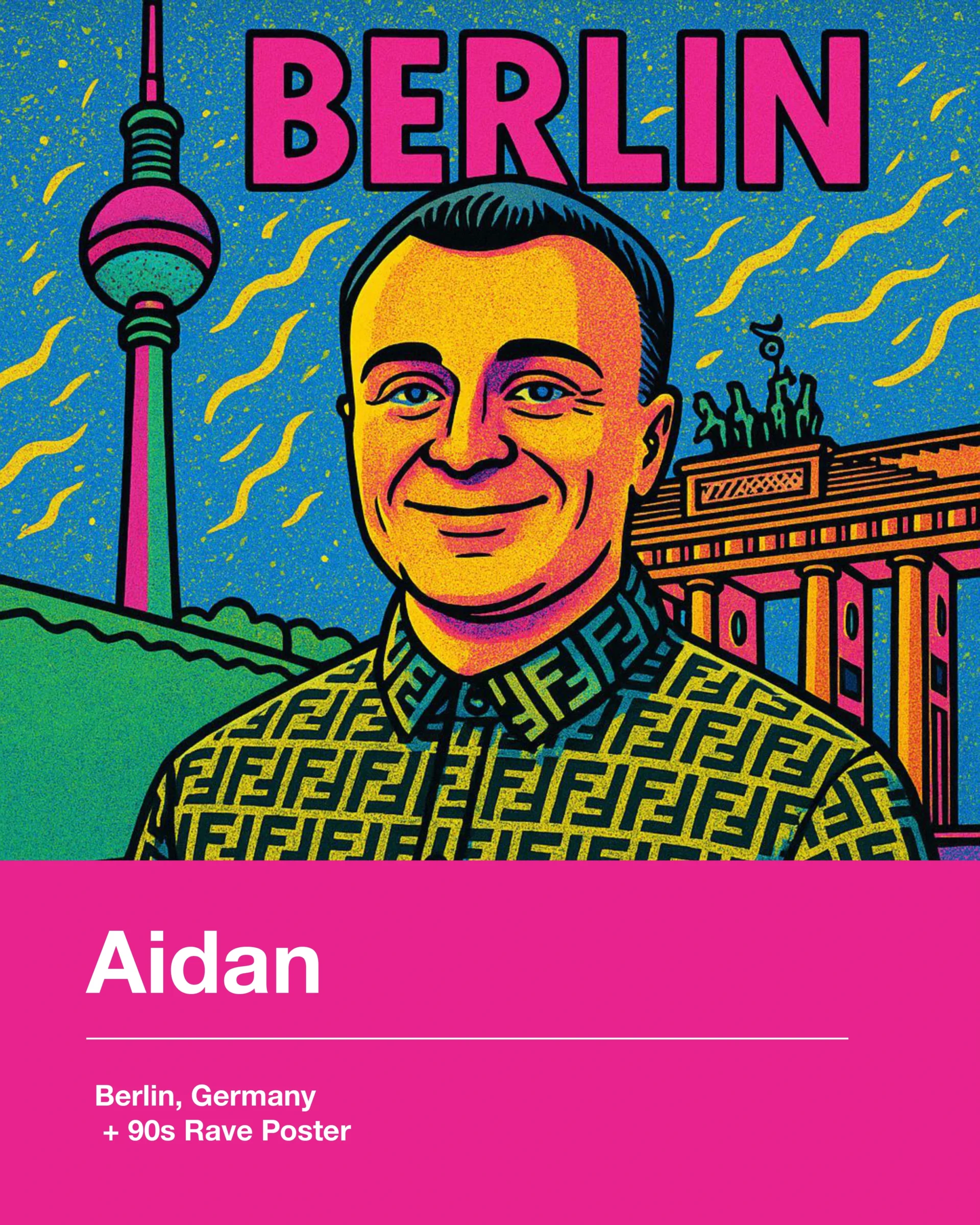
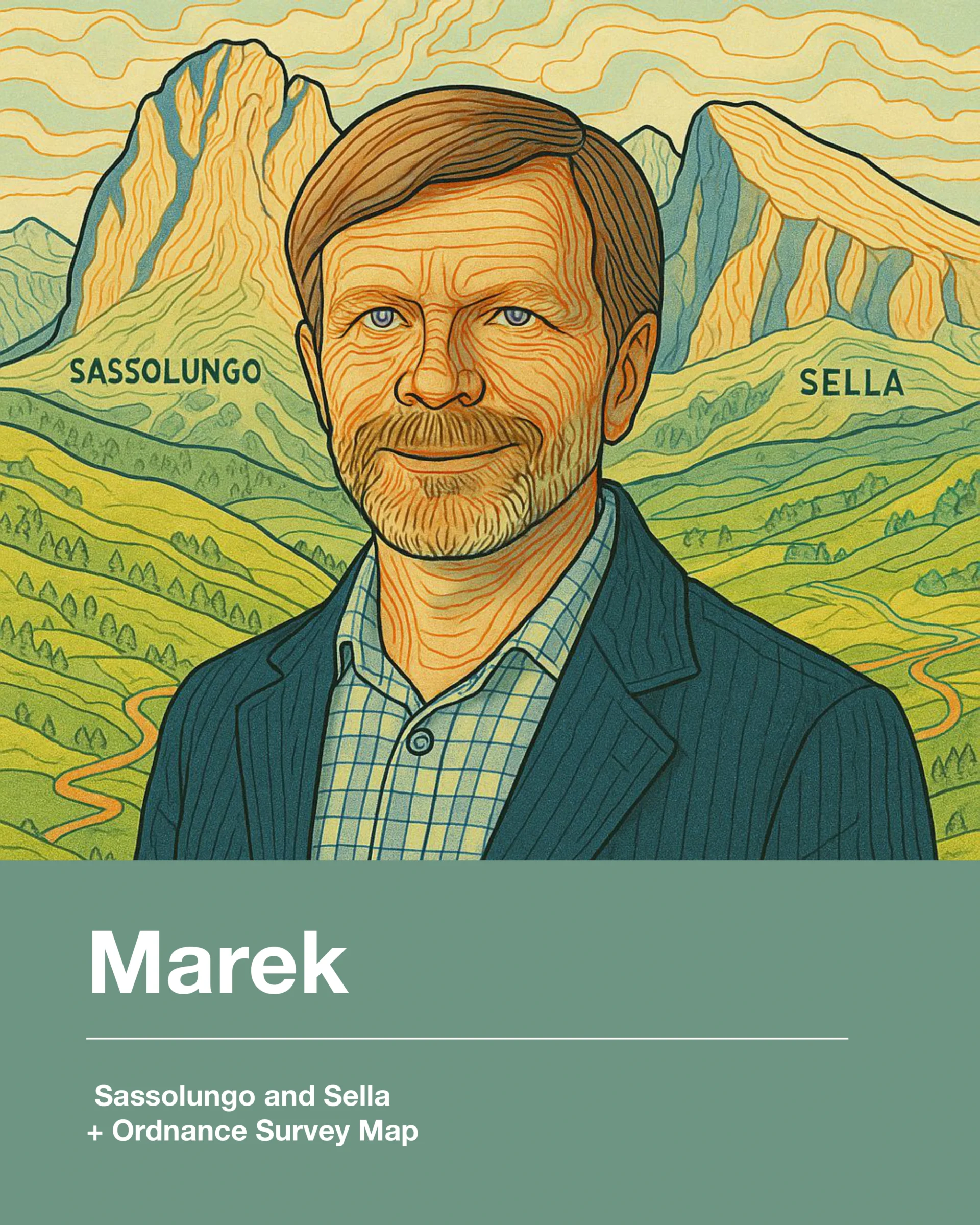
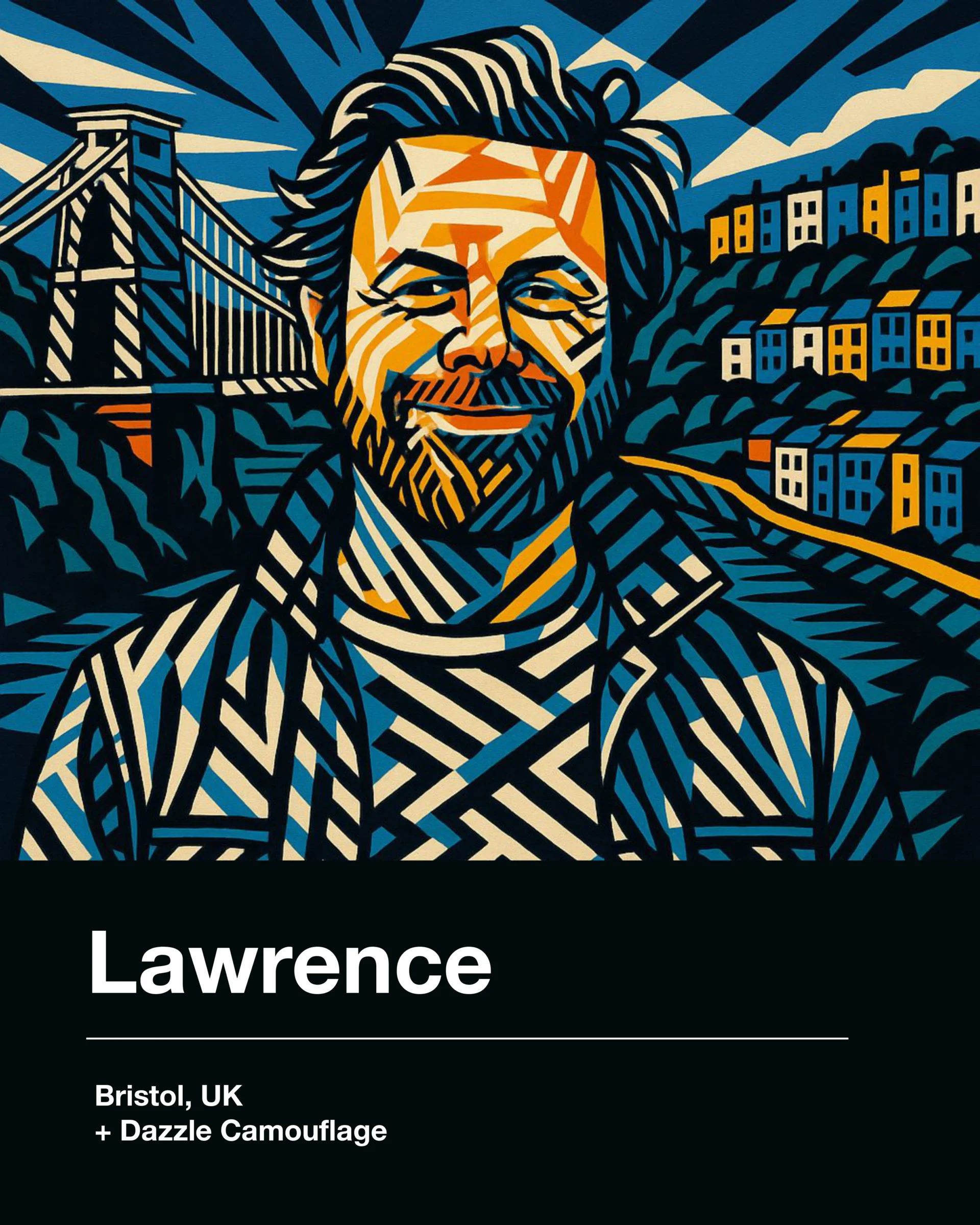
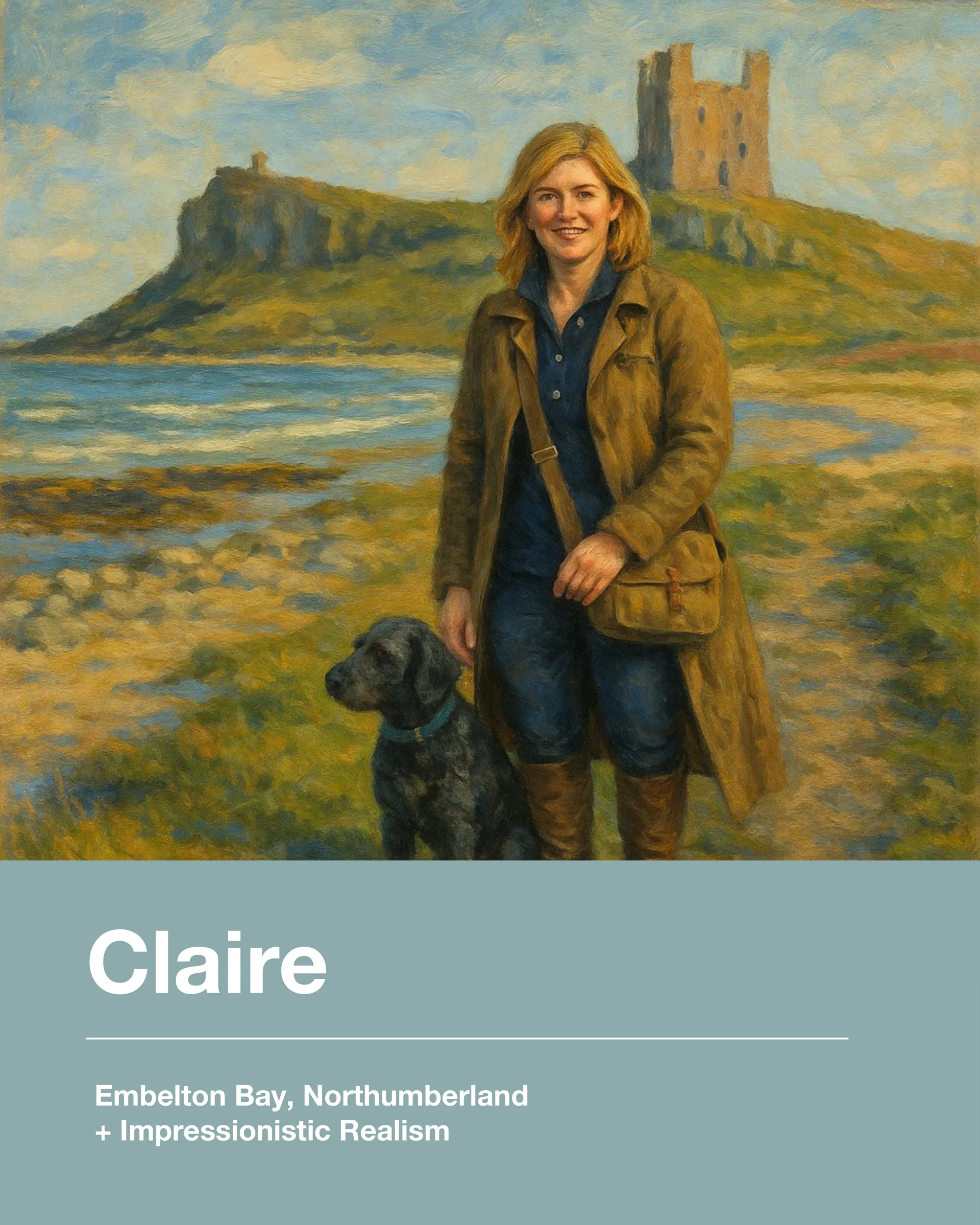

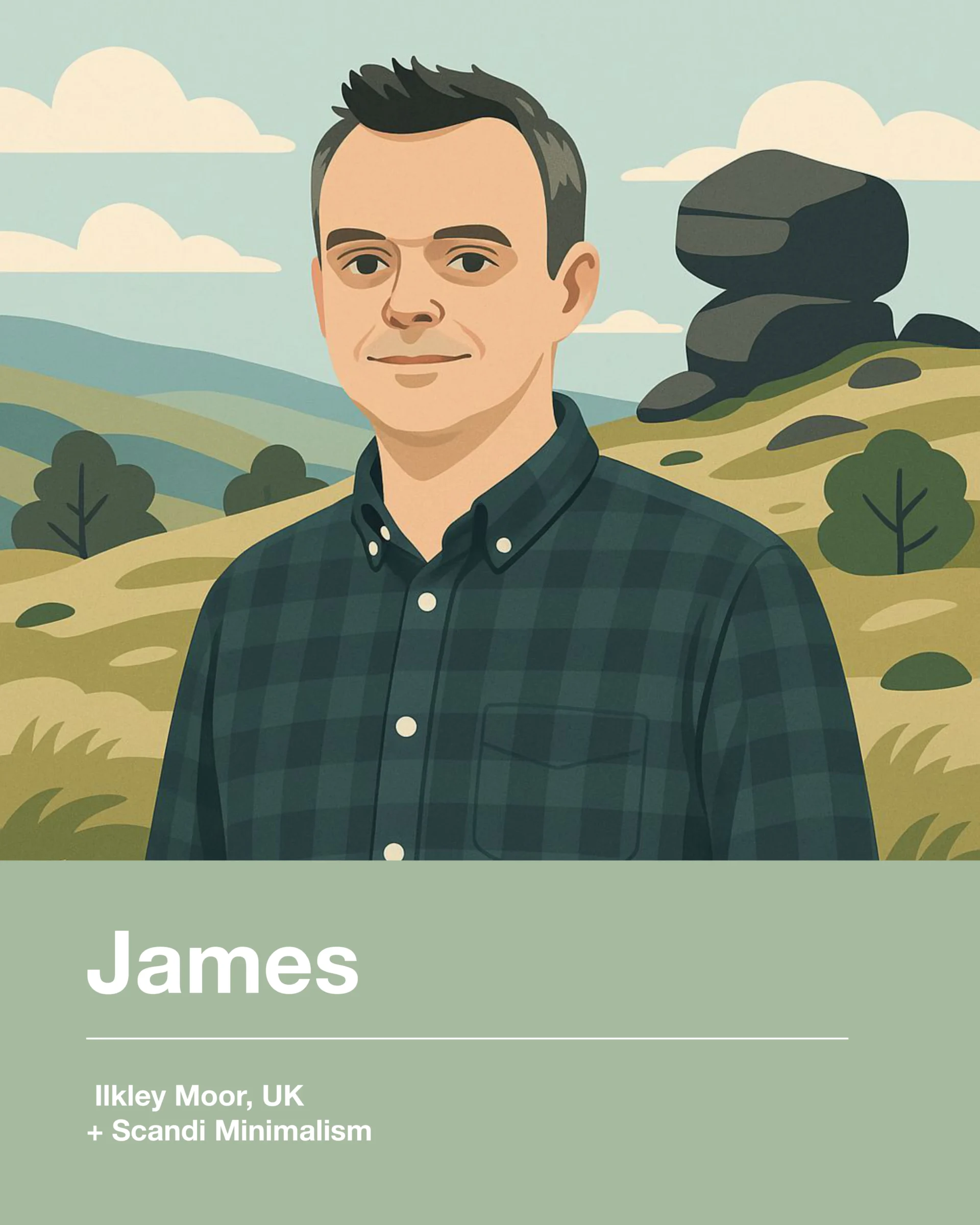
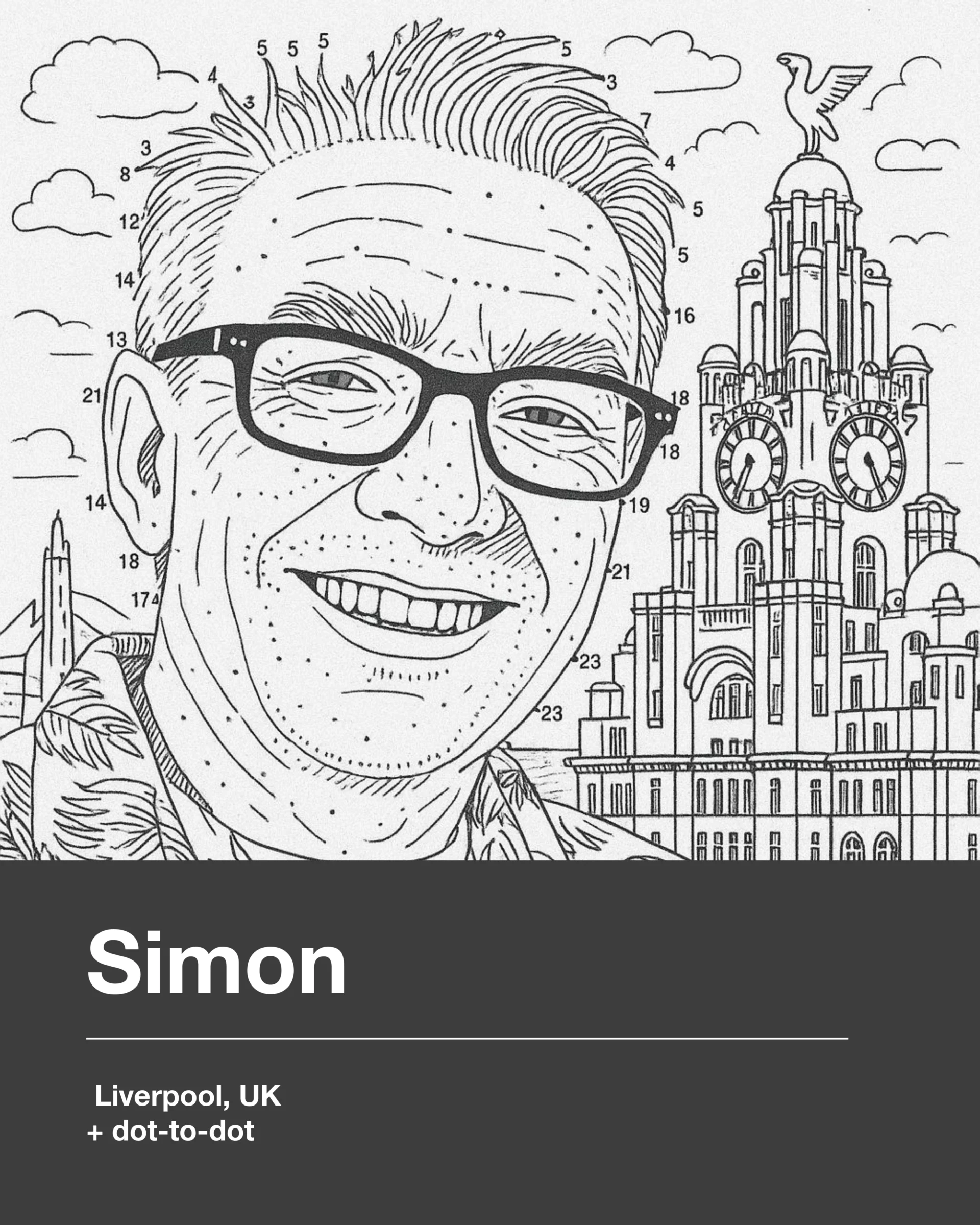
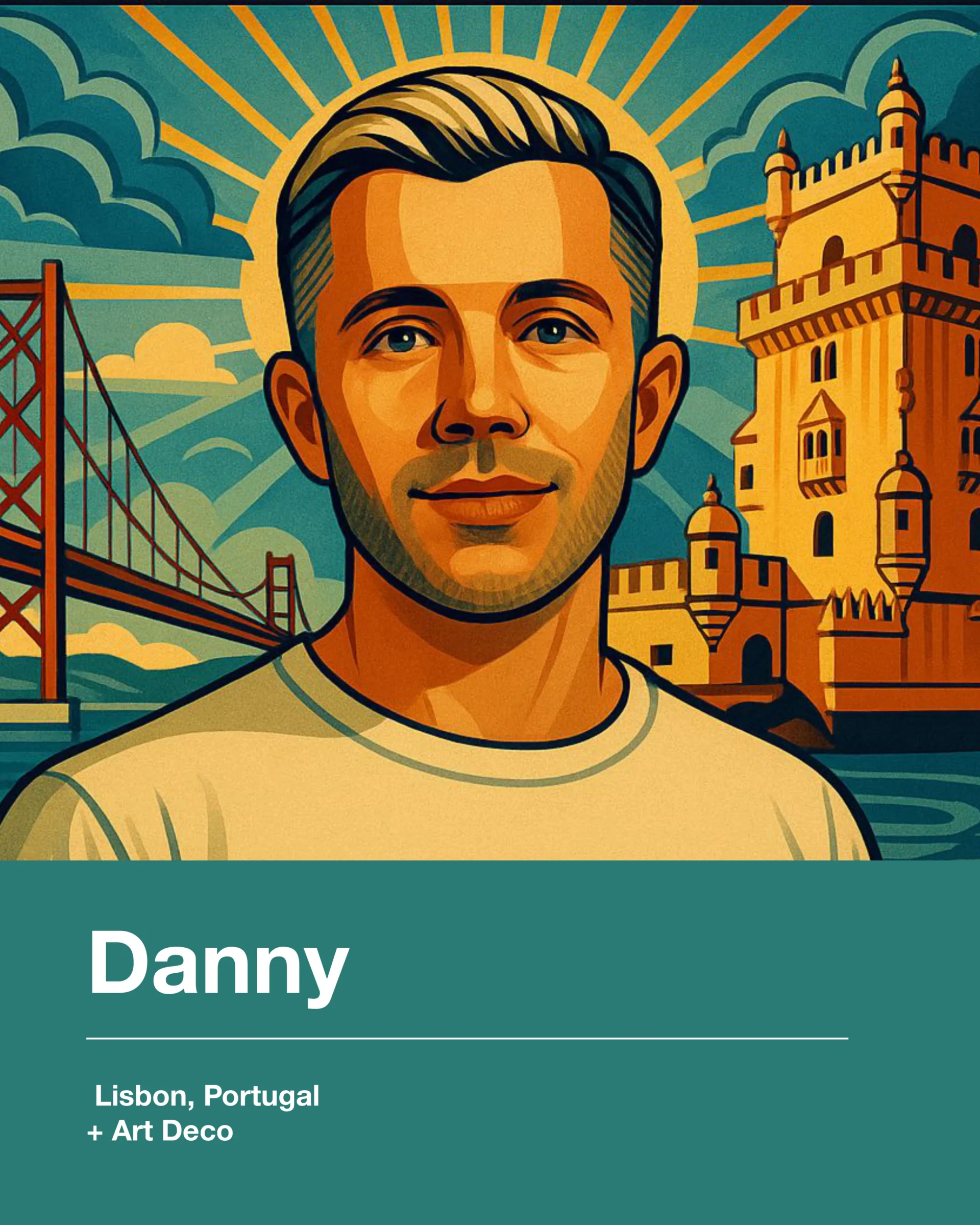
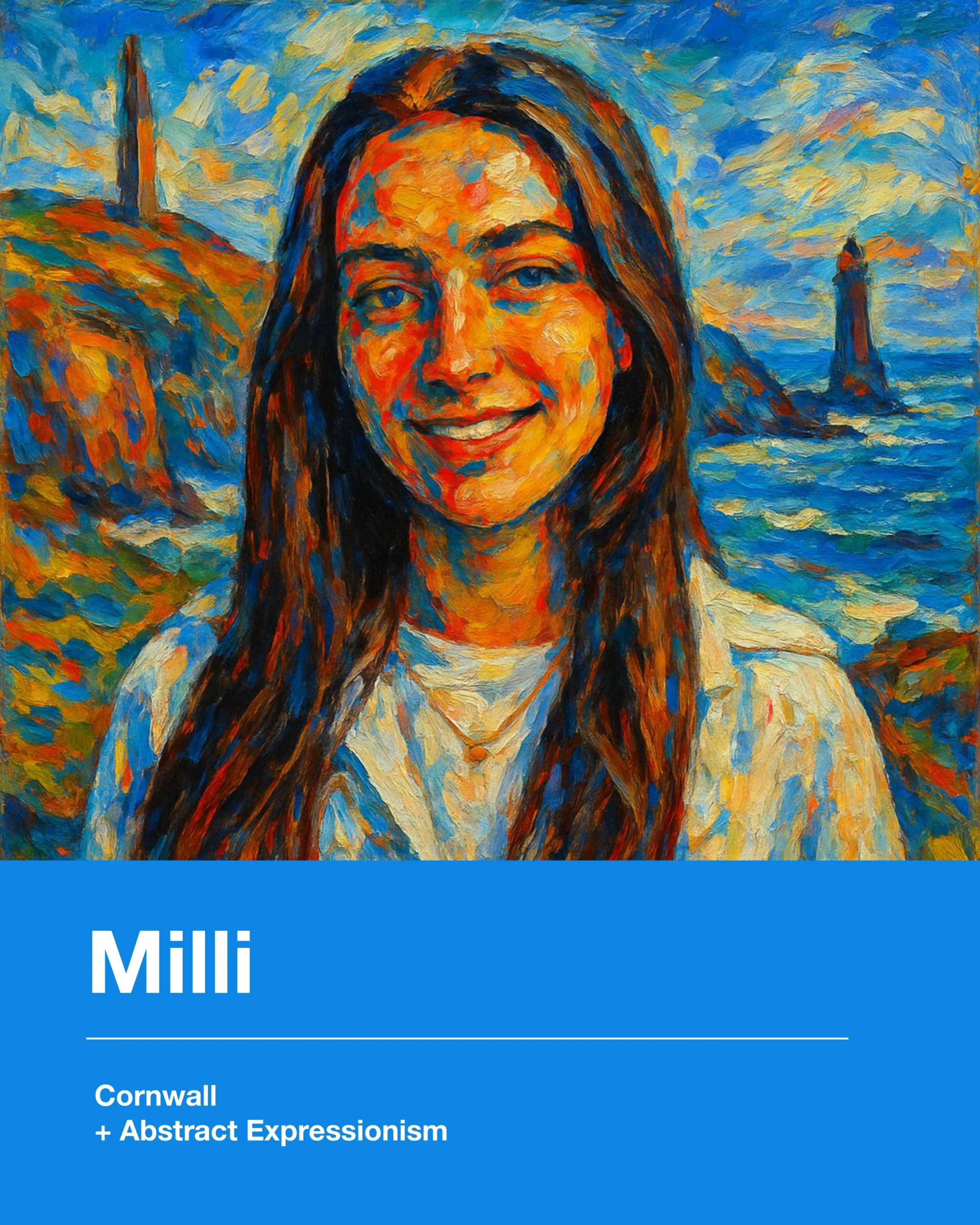
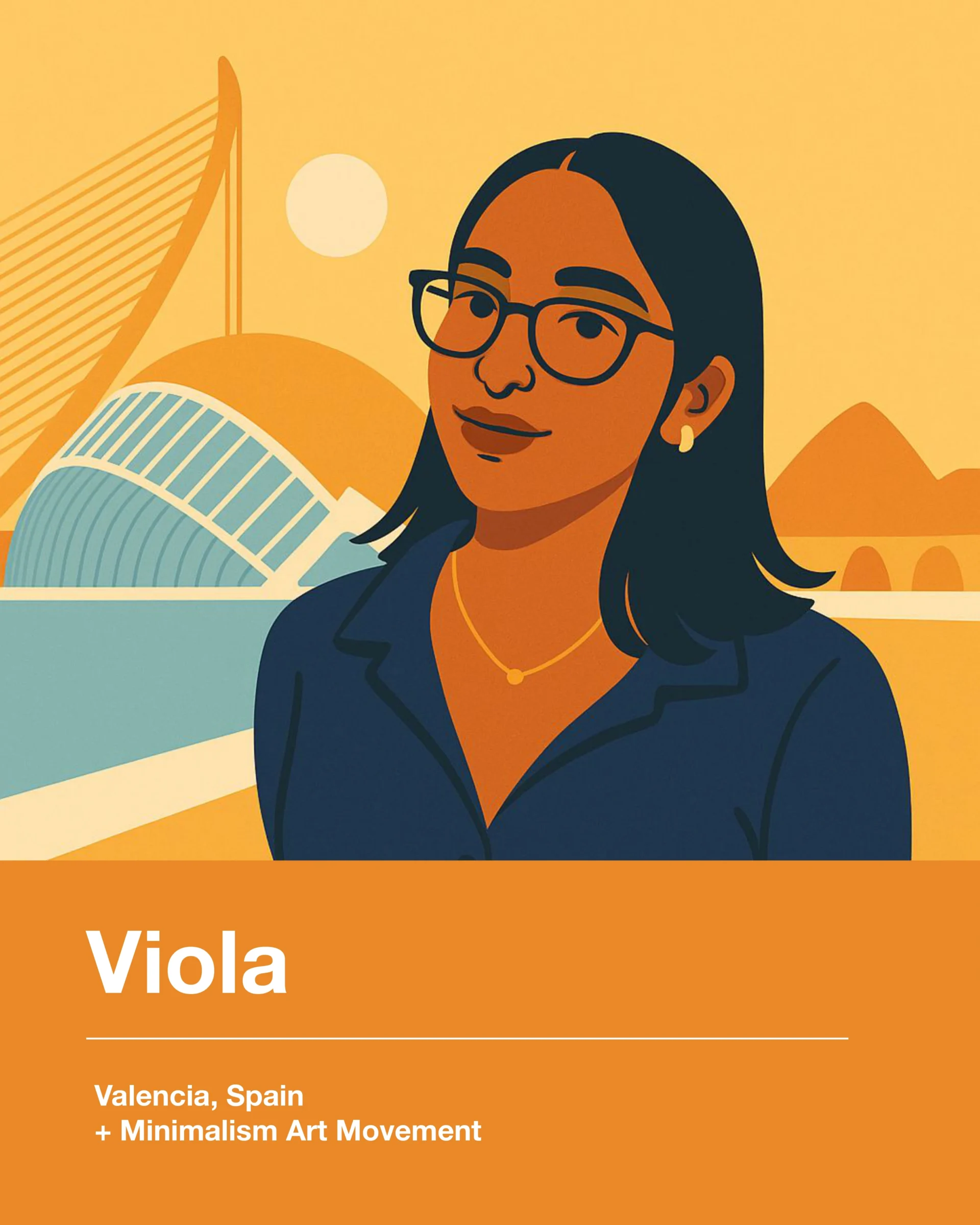
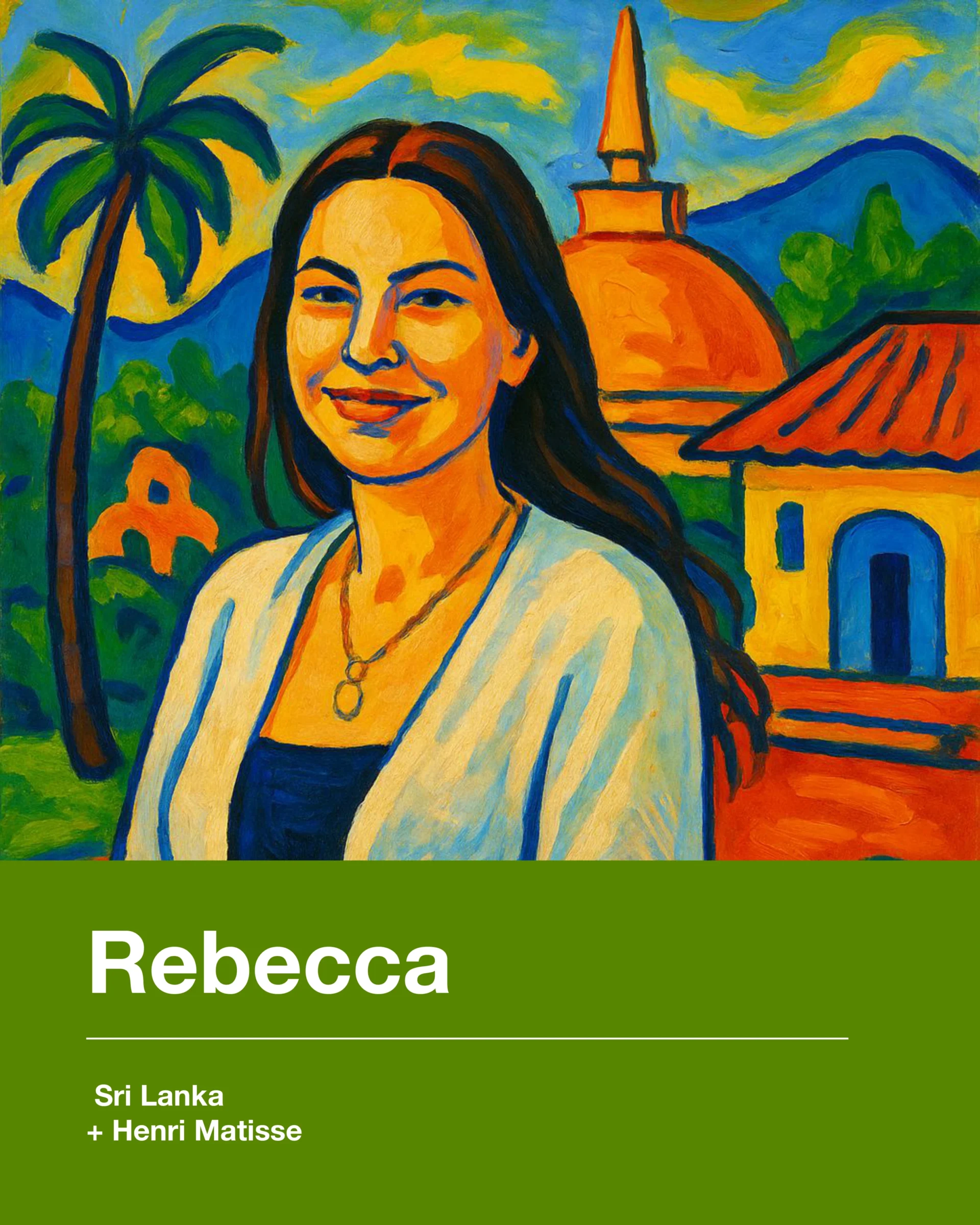

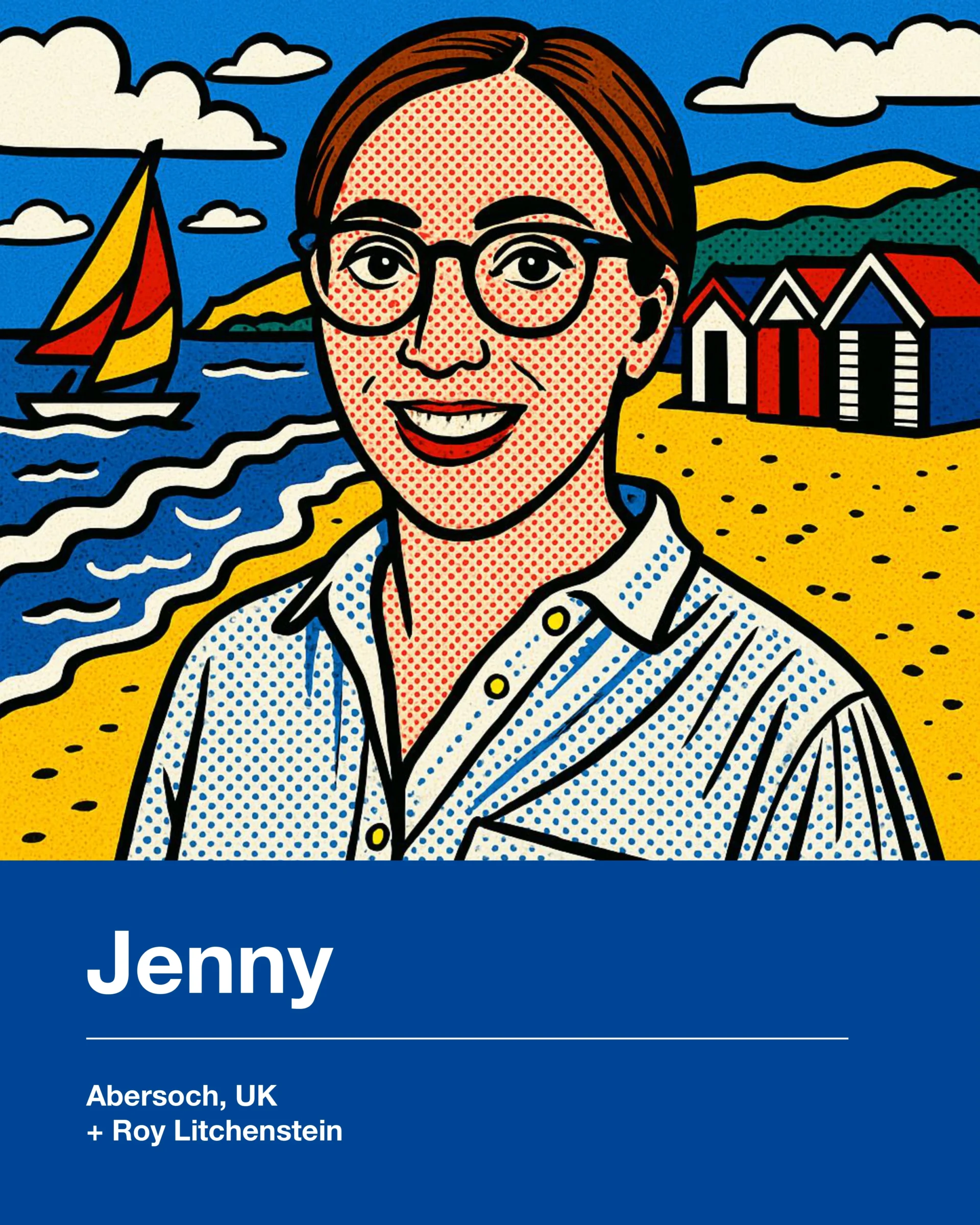

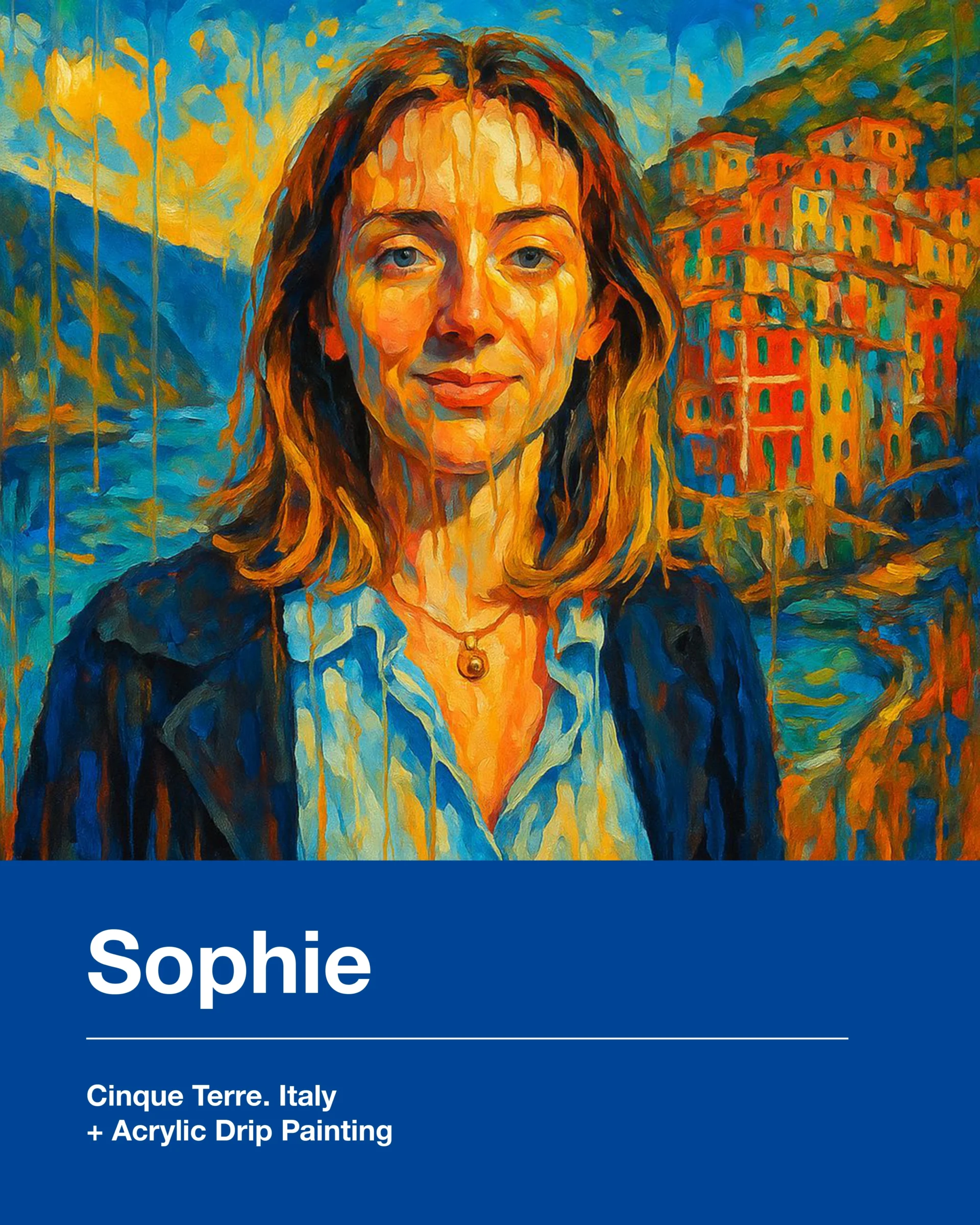
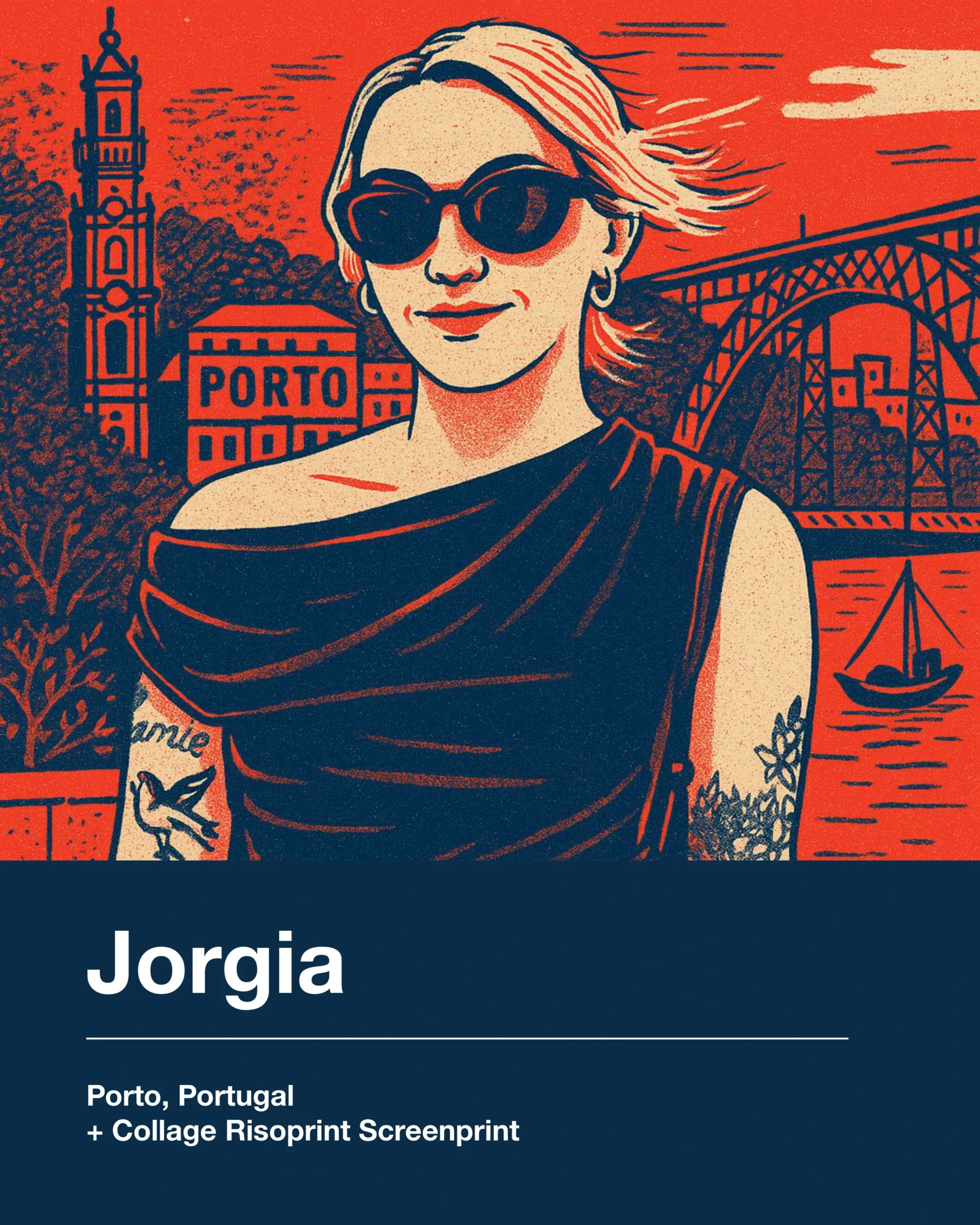
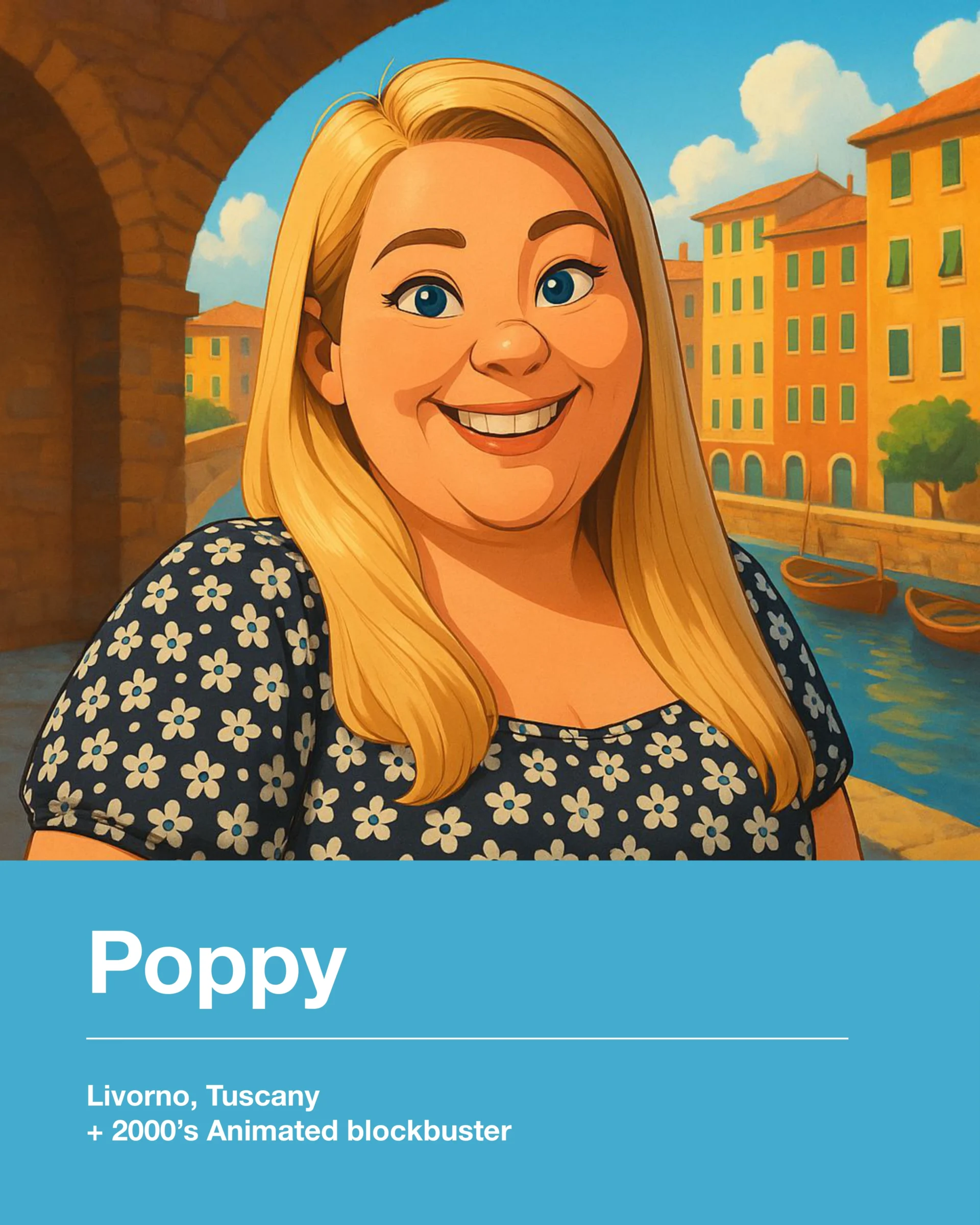
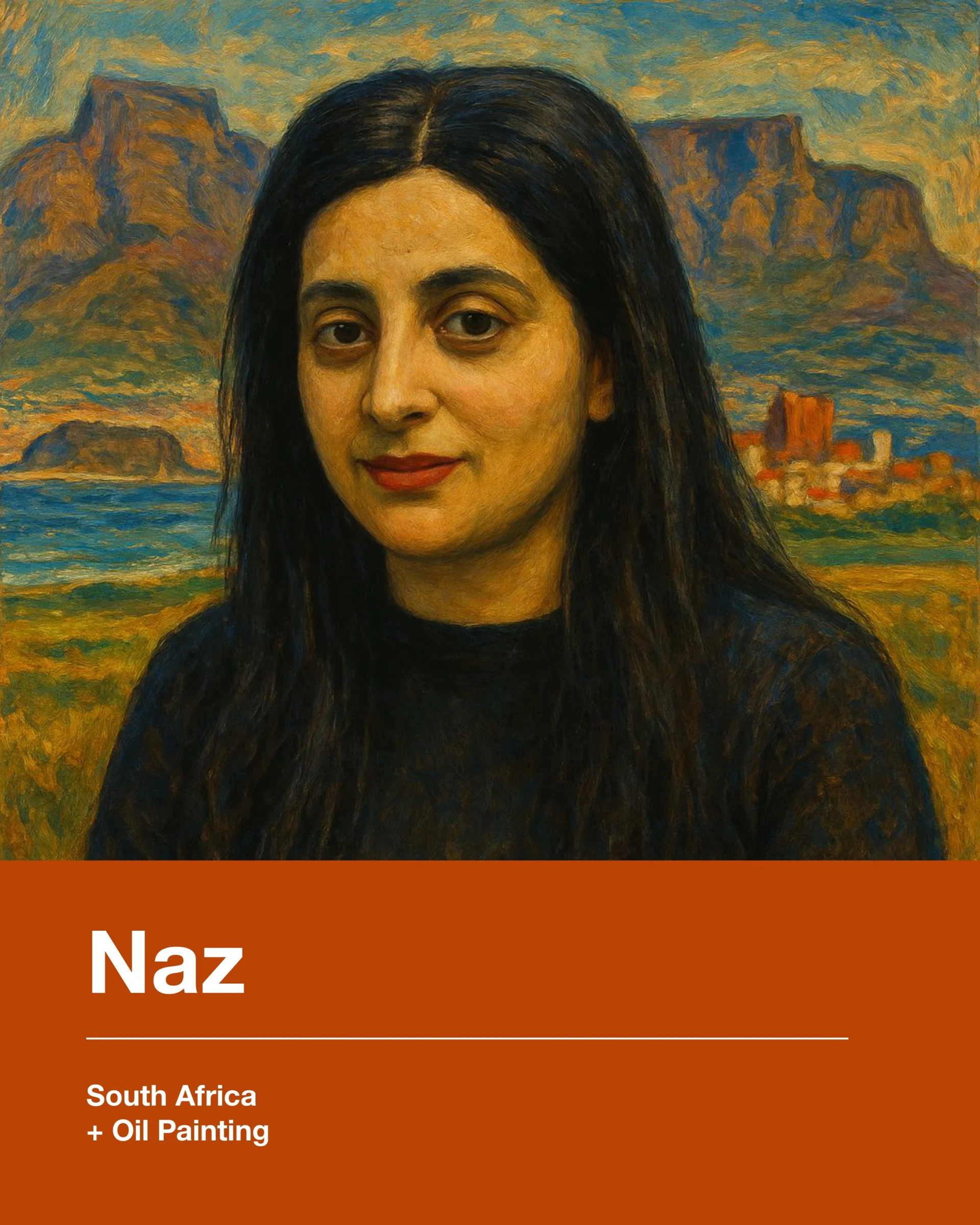
We want to know what you think.
- How do you feel about AI?
- Are you worried?
- Would you be happy to use it in a campaign?
- Where do you draw the line?
Let us know what you’re thinking.